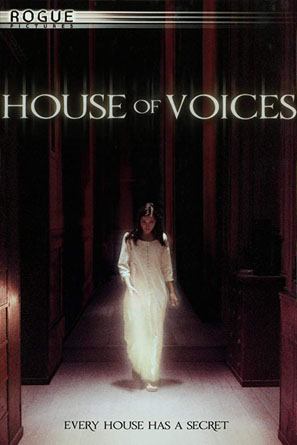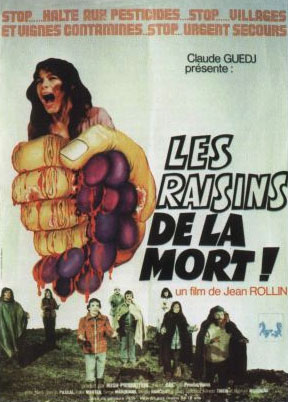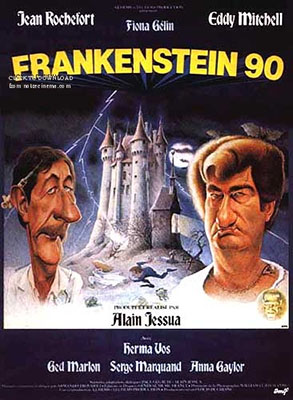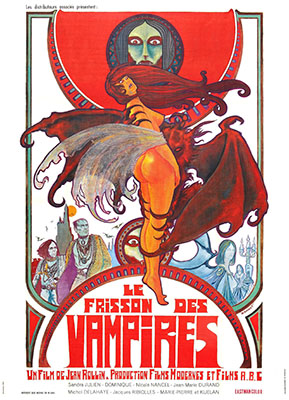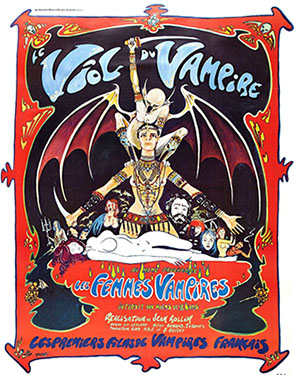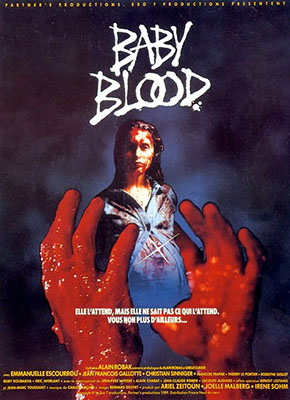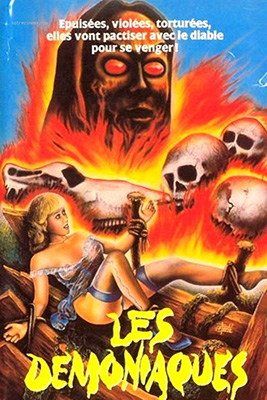
The film opens with a brief description of the wreckers, a group of pirates who, instead of cruising the seas to plunder, light fires on the beaches to lead passing ships into the rocks and then loot the wreckage. This particular group of wreckers is led by The Captain (John Rico) and is a particularly nasty and bloodthirsty bunch. While they are looting a wreck one night, two survivors (Lieva Lone and Patricia Hermenier) are washed ashore. Upon discovering them, the wreckers proceed to rape and assault the girls then leave them for dead. The two girls make their way to an abandoned cathedral where a swarthy demon is kept prisoner by a clown (Mireille Dargent) and a hippie. They make a deal with the demon in order to get their revenge on the wreckers.
Jean Rollin (Requiem for a Vampire, Grapes Of Death) directs this very weird yet visually stunning tale of pirates, a demon, the undead, psychic powers, and a clown. The soundtrack is composed of jazz and what sounds like stock horror movie music. Jean-Jacques Renon’s cinematography is gorgeous and he makes excellent use of the haunting locations. The already modest pacing of the film is hindered by some softcore sex moments but never slows to a crawl like some of Rollin’s artier efforts.
Joëlle Coeur (Seven Women for Satan) is awesome and extremely sexy as Tina, the most psychotic and violent of the wreckers. Tina’s pursuit of the two girls is unrelenting and when she screams “I’ll bring you back their heads!” well, I’m perfectly convinced she would have, if given the chance. John Rico is great as the Captain, a man who is haunted by his past misdeeds. Paul Bisciglia (Grapes Of Death) is very cool as Paul, the drunkard of the group, whose bloody (albeit highly unlikely) fate is perfectly ironic.
The two beautiful actresses, Lieva Lone and Patricia Hermenier, play their parts mute for whatever reason. According to the film these two demoniacs lose their ability to speak after getting their powers from the demon which is funny because in most of Rollin’s films, the heroines are almost always completely silent anyway. Either way, it’s kind of silly and a shame that these two actresses didn’t do more horror films. Their performances are haunting and very well played.
Les Démoniaques is an incredible film but I have to warn viewers not accustomed to Jean Rollin to put on their patience pants. Although this is certainly easier to jump into than say Rape of the Vampire or The Shiver Of the Vampires. A better Rollin starting point for casual horror fans may be found in Grapes Of Death or The Living Dead Girl. The dreamlike quality of this one may be too much for folks looking for splatter. However, what Les Démoniaques lacks in arterial spray and squewered intestines, it delivers with frightening brutality and disturbing rape scenes. There’s also gratuitous clown makeup and a disco fab “demon” man. So, if you’re looking for some trashy Eurohorror delivered with style and an unforgettable ending, then check this one out, people.
